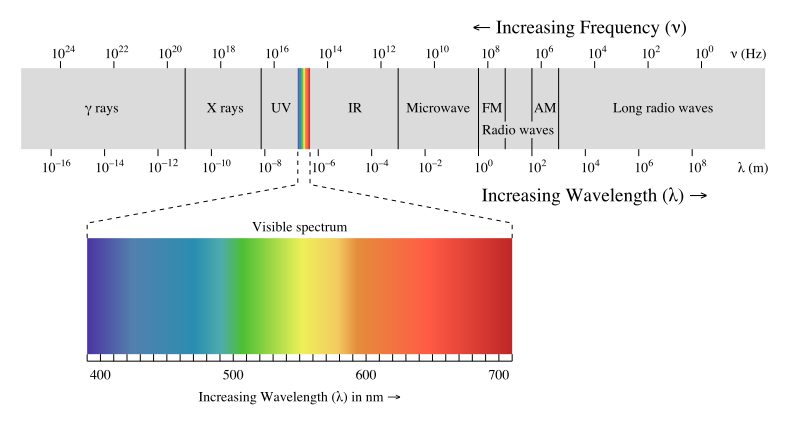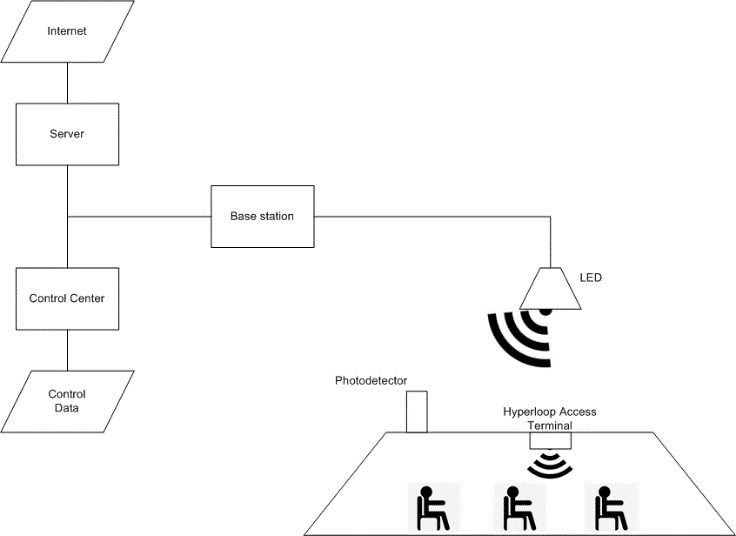Transportation needs to be in constant communication with the outside world. Take cars for example. The position is calculated using satellites, music is provided through radio waves and the internet is accessed via mobile networks. All these forms of communication allow cars to perform complex tasks and become autonomous. A new mode of transportation with a lot of potential is the Hyperloop, whereby a vehicle, or pod, levitates and travels through near-vacuum tubes. As a result, these pods can transport people and cargo at speeds of 1000 km/h. The Hyperloop pod also requires a constant connection to infrastructure, internet and control center. Therefore, like any other mode of transportation, the Hyperloop requires an appropriate communication system. Delft Hyperloop and Globalinternet joined forces to investigate the challenges and alternatives to achieve this.
Communication in transportation has two important functions: comfort and safety. The communication network allows the pod and its passengers to be connected to the internet. This greatly improves the passenger experience during the trip. Communication is also used to exchange data between the pod, infrastructure and control center. Information concerning location and speed is shared and used to guide the Hyperloop pods. A reliable communication system enables stable guidance of the pod and thus improves the safety of all passengers.
A communication system requires that certain system characteristics are met in order to function properly. The most important system requirements are:
- Bandwidth: The rise of smartphones and the Internet of Things has significantly increased the number of devices connected to the internet. Enough bandwidth should be available for Hyperloop communication to facilitate all these devices.
- Data rate: The internet demand of passengers grows every year. To provide a comfortable experience, a sufficient internet speed is necessary. Keeping the growth rate in mind, a minimal data rate of 300 Mbit/s is required.
- Latency: In communication systems there is always a delay between sending out a signal and receiving the response. If the delay becomes too large communications are less effective, and the safety is reduced. Therefore, a maximum latency of 50 milliseconds is set for critical services (Sniady & Soler, 2013).
Challenges
The communication system of the Hyperloop shares similarities to other modes of transportation. However, the Hyperloop encounters some new challenges mainly due to the unique characteristics such as the steel tube, low pressure and high speeds. The design of the Hyperloop communication system needs to overcome these challenges to provide a reliable and high-speed connection between the Hyperloop pod and infrastructure. A brief overview of the challenges faced is given below.
- Tube: The Hyperloop tube forms a unique environment. The thick tube is made of steel preventing the use of wireless communication. Moreover, the near-vacuum environment makes maintenance more difficult.
- Handover: The Hyperloop pod requires a constant connection to the infrastructure. Due to the mobile nature of the pod, the connection sometimes needs to be transferred to a new part of the tube. This transfer is called a handover. The Hyperloop travels at speeds over 1000 km/h which makes handovers frequent. The Hyperloop communication networks needs to ensure reliable handovers to create a constant connection with the outside world.
- Doppler effect: One of the phenomena present when travelling at high relative velocity is a shift in frequency. This phenomenon, called the Doppler effect, needs to be addressed for Hyperloop communications.
Communication technologies
The requirements and challenges of the Hyperloop communication system have been identified. Different technologies can be used to overcome the challenges and meet the requirements. These technologies make use of several parts of the electromagnetic spectrum. The electromagnetic spectrum is shown in Figure 1. Radio waves are traditionally part of communication systems such as GPS and phone networks. However, due to the lack of available bandwidth and low data rate, radio waves are not considered for next generation communication systems. Therefore, other parts of the electromagnetic spectrum are looked at.

The millimeter wave band offers much more bandwidth and allows for high-speed connections. The main drawback of using millimeter waves is the lower range compared to radio waves. Another drawback is the inability to penetrate materials such as concrete.
The optical spectrum is another possible option. This spectrum includes ultraviolet, infrared and visible light. Optical communication has an almost infinite bandwidth and data rates of 100 Gbps can be reached (Tsonev et al., 2015). Atmospheric effects heavily influence the optical spectrum due to attenuation and therefore limit the range.
Design of the communication system
Communication between the Hyperloop pod and tube takes place inside a near-vacuum environment. These unique conditions alongside the system requirements make optical wireless communication the preferred communication technology to use. Methods such as Light Fidelity, or Li-Fi, and Free Space Optical Communication, or FSOC, are suitable for use because the atmospheric losses in the tube are minimal. Li-Fi is a communication system which rapidly modulates the intensity of LEDs to transfer data at high speeds. FSOC uses the modulation of laser tracking beams to establish a long-range and high-speed connection. The tracking beams are unable to provide a long-distance connection due to the small size of the tube. Therefore, Li-Fi is chosen over FSOC for the pod to infrastructure communication.

A schematic overview of the Hyperloop communication system is shown in Figure 2. Internet and control data is sent via fiber optic cables to Hyperloop base stations located along the tube. At regular intervals, the cables enter the tube. An LED transmits the signal to the Hyperloop pod moving at 1000 km/h. A traditional Wi-Fi router enables internet access for all the passengers.
Conclusion
The Hyperloop communication system provides both safety and passenger comfort. But the communication aspect is made more difficult by internal and external challenges. Using combined wired-wireless communication system and optical wireless solutions, a reliable and high-speed communication system is created.
Optical wireless communication provides low-latency communication with almost unlimited bandwidth. However, some aspects that have not yet been evaluated to a high enough degree require more research. The range of optical communication is limited which increases the frequency of handovers. By implementing a system with visible light and a system with infrared, the range is increased. Moreover, the two systems working independently incorporate redundancy into the design.
Handovers are an integral part of every mobile communication system. The increased range of infrared Li-Fi systems lowers the frequency of these handovers. Nonetheless, the issue of handovers remains one of the biggest challenges of the communication system. An in-depth review of computing power, frequency and handover protocols is required for the implementation of the Hyperloop.
The Hyperloop communication system is designed in collaboration with Globalinternet. Globalinternet provides innovative communication and internet solutions worldwide. By bundling the knowledge of Globalinternet and Delft Hyperloop, a concept design for the Hyperloop communication system was created. For more information about Globalinternet, please visit: https://Globalinter.net
- Sniady, A. & Soler, J. (2013). Performance of lte in high speed railway scenarios.
- Tsonev, D., Videv, S., & Haas, H. (2015). Towards a 100 gb/s visible light wireless access network.



0 Comments